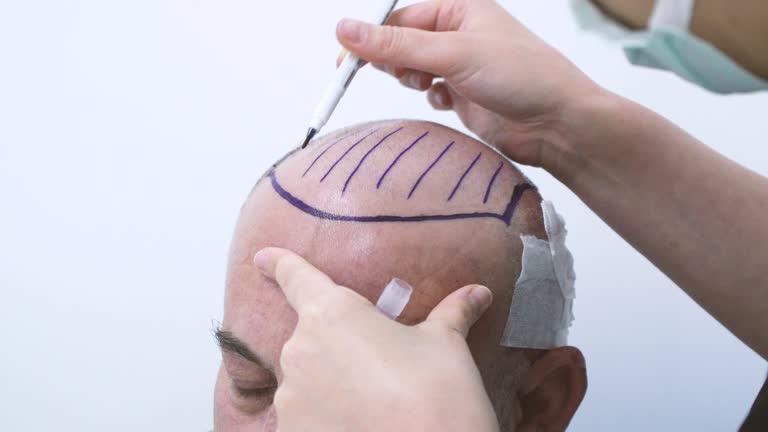A hair transplant is a life-changing procedure for individuals struggling with hair loss, restoring natural-looking hair and boosting confidence. One of the most common questions about this treatment is its longevity: how long does a hair transplant last? Hair transplants, especially those using advanced techniques, are designed to provide long-term results. In this article, we’ll explore how long hair transplants typically last and why they can be a reliable solution for hair loss. This Article delves into the details of Hair Transplant in Dubai Treatment.
Understanding the Hair Transplant Process
Hair transplants are permanent because the hair follicles that are transplanted come from the areas of your scalp that are genetically resistant to balding. These follicles are usually taken from the back or sides of the head, commonly referred to as the donor area. Once transplanted into the thinning or balding regions, they retain their resistance to hair loss, thus continuing to grow naturally for years, if not a lifetime. In general, the transplant procedure aims to deliver hair that blends seamlessly with the existing hair.
How Long Do Hair Transplants Last?
Typically, a hair transplant can last a lifetime. However, the transplanted hair follicles are not immune to the effects of aging or other health factors. While the transplanted hair will continue to grow in the target area, the surrounding, non-transplanted hair can still undergo shedding or thinning as a person ages. It is crucial to understand that hair transplant longevity can depend on the individual’s overall health, lifestyle, and any genetic predisposition to further hair loss. If someone continues to lose natural hair around the transplanted area, they may still require additional treatments down the line, though the transplanted hair will not be affected.
Why Is Hair Transplant Considered a Long-Term Solution?
Hair transplants offer a long-lasting solution to hair loss because the transplanted hair follicles are robust and not prone to hair thinning or balding. This characteristic is especially important for individuals seeking to restore a natural hairline. Unlike temporary hair restoration treatments such as wigs or products that may need constant replacement, hair transplants don’t require regular maintenance after the healing process. Once fully healed, you can treat your hair as you would naturally, without worrying about the continued degradation or the need for additional treatments.
Benefits
A significant benefit of a hair transplant is that it offers a long-lasting, permanent solution. The transplanted follicles are durable and provide a natural appearance. People who choose this option benefit from more density and fullness in their hair, leading to enhanced confidence and improved self-esteem. Another key advantage is the minimal maintenance required after the procedure, as the hair grows naturally, just like the surrounding healthy hair. Compared to other temporary fixes, such as using products for coverage, hair transplants are a more effective and practical solution over time.
FAQs
How long after a hair transplant will I see results?
Most people start noticing visible results from their hair transplant within 6 to 12 months after the procedure. Full results may take up to 18 months, as it takes time for the newly transplanted hair to settle and grow.
Does transplanted hair fall out after a procedure?
Yes, it is common for the transplanted hair to fall out after the procedure. This is known as shedding and is a part of the natural hair growth cycle. The follicles will then begin to grow new hair after a few months.
Is a hair transplant permanent?
Yes, hair transplants are generally permanent because the transplanted hair follicles are resistant to hair loss, offering lasting results. However, surrounding hair may continue to thin or shed over time.
Will I need a second hair transplant in the future?
While a hair transplant is permanent, some individuals may experience further thinning of their non-transplanted hair in the future. This could require a touch-up or additional hair transplant, but the transplanted hair will not be affected.
Can hair transplants fail?
Though rare, a hair transplant can fail if proper aftercare instructions aren’t followed. Infections, poor health, or smoking can also affect the success of the procedure, making it vital to take care of the transplanted area during recovery.
Conclusion
In conclusion, hair transplants provide a long-lasting solution for individuals battling hair loss. The transplanted hair follicles offer permanent results, with the potential for years of natural-looking hair growth. While some factors can influence the longevity of the results, most people can enjoy their new hair for a lifetime with minimal maintenance. By following aftercare guidelines and living a healthy lifestyle, individuals can maximize the success of their hair transplant and enjoy restored confidence and a fuller hairline.






Comments